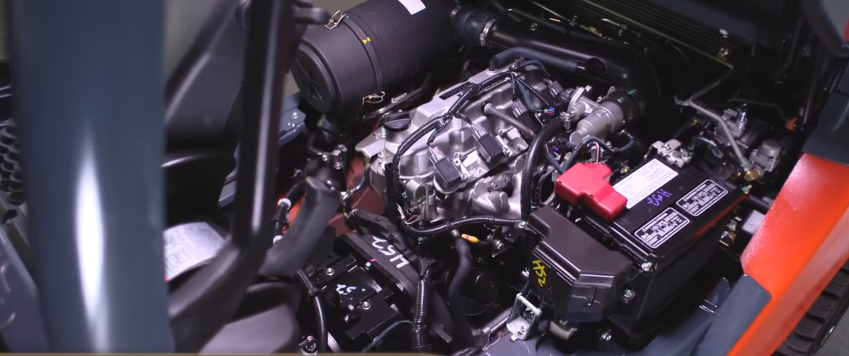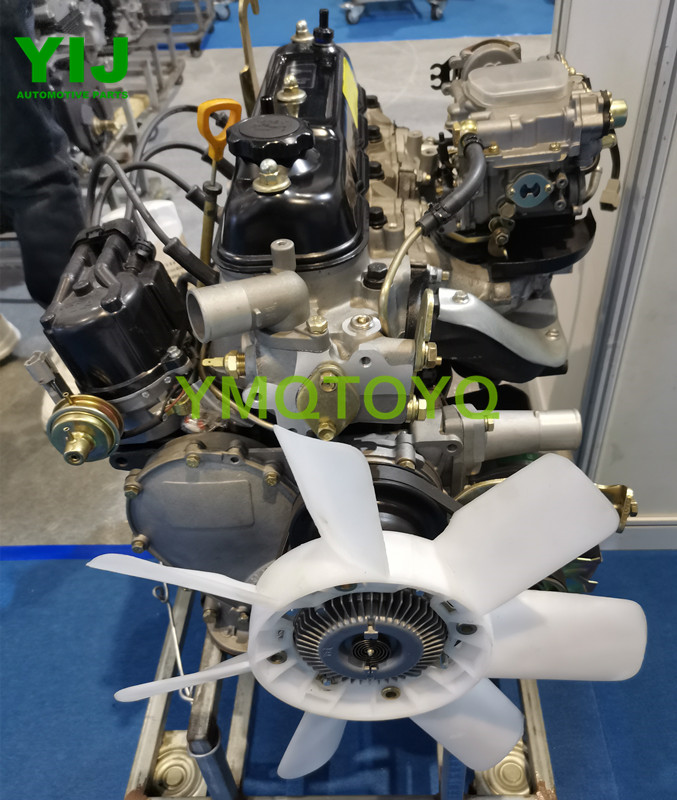Checking Out the Numerous Sorts Of Engine: Which One Fits Your Requirements?
Inner burning engines proceed to dominate due to their dependability, while electric engines are obtaining traction for their sustainability. Hybrid engines provide a functional compromise, and diesel engines stand out for their power in demanding applications.

Inner Combustion Engines
Interior burning engines (ICEs) are the backbone of modern transport, powering a huge selection of cars from cars and trucks to planes. These engines operate the principle of converting fuel right into mechanical energy through a series of controlled surges within a burning chamber. The most common kinds of ICEs consist of fuel engines, diesel motor, and rotating engines, each designed to meet particular efficiency and performance requirements.
Fuel engines generally use trigger ignition, while diesel engines rely upon compression ignition, resulting in distinctive differences in gas efficiency and power output (4y engine). Rotary engines, or Wankel engines, supply a compact design and smooth procedure, however are less generally utilized in mainstream applications
ICEs have actually undertaken considerable innovations in modern technology, consisting of the intro of turbocharging and fuel shot systems, which boost overall effectiveness and performance. Despite their performance enhancements, ICEs encounter enhancing examination due to their environmental effect, specifically relating to greenhouse gas exhausts.
Electric Engines
As worries about environmental sustainability and nonrenewable fuel source reliance expand, electrical engines have arised as a compelling alternative to internal burning engines. These engines make use of electrical motors powered by batteries or fuel cells, supplying a cleaner and much more efficient motive powers.
Among the main advantages of electric engines is their reduced discharges. Unlike conventional engines that burn nonrenewable fuel sources, electrical engines create zero tailpipe exhausts, dramatically reducing air contamination and adding to boosted public health and wellness. In addition, the performance of electrical motors commonly goes beyond that of inner combustion engines, converting a better proportion of power from the source of power into useful energy for activity.
Electric engines are also noteworthy for their quiet operation, making them perfect for city settings. 4y engine. The simplicity of their style causes fewer relocating components, which can lead to reduced upkeep prices and enhanced reliability gradually
However, challenges remain, consisting of battery production impacts, charging infrastructure, and array constraints. Regardless of these hurdles, the expanding investment in electrical automobile innovation and renewable resource resources factors towards a promising future for electrical engines, positioned to play a critical duty in the change towards lasting transportation.
Crossbreed Engines
Blending the advantages of both conventional and electric internal combustion engines, hybrid engines represent a versatile solution in the mission for effective and lasting transport. These engines incorporate a fuel or diesel motor with an electric motor, permitting enhanced gas efficiency and lowered exhausts compared to conventional cars.
Crossbreed engines run in numerous modes, using the electrical motor for low-speed driving and the inner burning engine for higher rates or when even more power is required. This vibrant procedure not just improves gas economic climate however additionally adds to a smoother driving experience. Regenerative braking is one more crucial feature, recording energy generally lost during stopping and rerouting it to recharge the battery.

As consumers increasingly focus on eco-friendliness, crossbreed engines attract attention as a functional selection, offering an efficient equilibrium of efficiency, effectiveness, and environmental duty. This adaptability makes them suitable for metropolitan commuting and long-distance traveling alike.
Diesel Engines
Performance and power are trademarks of diesel motor, which have long been preferred for their toughness and gas economy. These useful site engines run on the concept of compression ignition, where air is compressed to a high temperature before fuel is injected, sparking it without the requirement for ignition system. This procedure makes it possible for diesel motor to achieve greater thermal effectiveness contrasted to gasoline engines, equating into much better fuel gas mileage and lower see co2 exhausts.
Diesel engines are especially fit for sturdy applications such as trucks, buses, and industrial equipment, where torque and toughness are critical. Their design generally includes more powerful parts to endure the greater stress produced throughout procedure, resulting in longer service life and decreased maintenance prices.

Different Fuel Engines
While diesel motor have long controlled the landscape of heavy-duty power resources, alternative gas engines are getting grip as viable options for an extra lasting future. These engines make use of a range of fuels, such as pressed gas (CNG), gas, ethanol, and hydrogen, intending to minimize greenhouse gas emissions and dependence on fossil gas.
One significant benefit of alternate fuel engines is their prospective to reduced carbon footprints. For example, CNG engines discharge fewer pollutants contrasted to traditional diesel motor, making them appropriate for metropolitan transportation systems and fleets looking for to boost air top quality. Ethanol, originated from biomass, not only reduces exhausts but likewise sustains agricultural economic situations.
Hydrogen fuel cells stand for a sophisticated advancement in this realm, using zero-emission power through a chain reaction in between hydrogen and oxygen. Nevertheless, difficulties such as facilities advancement and production costs stay barriers to prevalent adoption - 4y engine.
Conclusion
Inner burning engines offer integrity, while electric engines prioritize sustainability and decreased maintenance. Crossbreed engines combine the benefits next of both, improving effectiveness, whereas diesel engines give premium power and torque for sturdy applications.
Hybrid engines offer a functional concession, and diesel engines stand out for their power in requiring applications. The most typical types of ICEs include fuel engines, diesel engines, and rotary engines, each designed to meet particular efficiency and effectiveness needs.
Unlike traditional engines that melt fossil fuels, electrical engines create no tailpipe discharges, substantially decreasing air contamination and contributing to boosted public health.Crossbreed engines run in numerous modes, making use of the electrical motor for low-speed driving and the internal burning engine for higher rates or when more power is required. Crossbreed engines integrate the benefits of both, enhancing effectiveness, whereas diesel engines offer exceptional power and torque for sturdy applications.